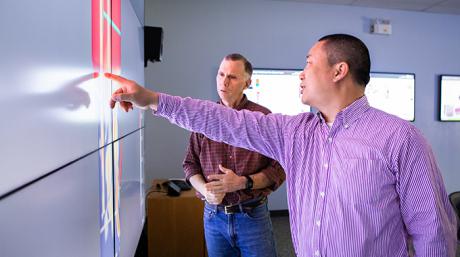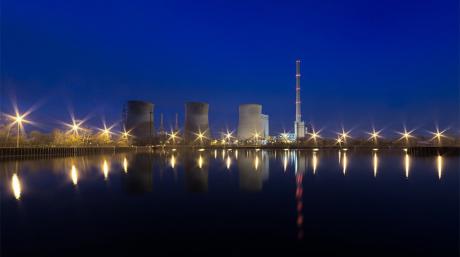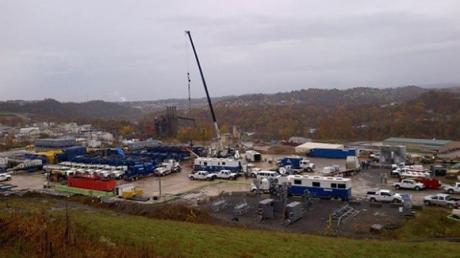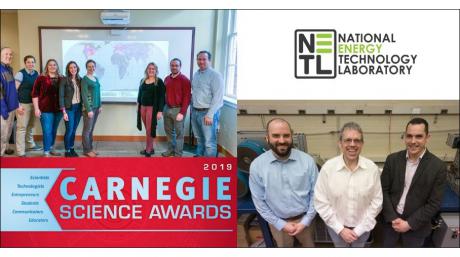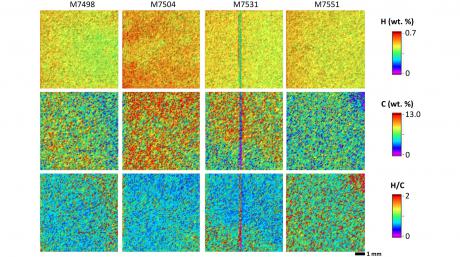Medical X-ray machines use electromagnetic radiation — radiant energy with wavelengths shorter those produced by visible light — to gain information about what is happening inside the human body. Likewise, airport security checkpoints employ X-rays to examine the internal contents of travelers’ baggage.
In a cost-saving computer modeling effort, the National Energy Technology Laboratory (NETL) assisted in solving a critical technical issue at the U.S. Department of Energy (DOE) Office of Environmental Management (EM) Integrated Waste Treatment Unit (IWTU), preventing a long-term delay of start-up operations.
NETL technology research and innovation dedicated to more efficient energy-related water management approaches and recovery of heavy metals like lead and useful rare earth elements (REEs) from domestic water supplies are being highlighted by the Laboratory March 22 as part of its recognition of International World Water Day — a United Nations designated time for reflecting on the importance of water in daily life.
World Water Day was established in 1993 to increase awareness and action dedicated to sustainably managing water resources.
Researchers at the National Energy Technology Laboratory (NETL) are reporting positive results in development of new pre-combustion solvents that can capture carbon dioxide (CO2) more effectively and economically than state-of-the-art solvents now in use.
A solvent is a liquid capable of dissolving another substance. For example, water is a solvent for salt.
After 17 years of research involving NETL, industry partners, and a high-tech research group known as the AUSC Consortium, significant progress is being made toward scaling up the fabrication of components made from advanced nickel superalloys that will help bring advanced ultrasupercritical (AUSC) power plant technology to the level of readiness for commercial-scale demonstration.
NETL experts used a suite of sophisticated data-gathering instruments at the Marcellus Shale Energy Environmental Laboratory (MSEEL) near Morgantown, West Virginia, to secure a greater understanding of emissions and dispersion rates of various compounds — geological and environmental systems research that could help avoid future adverse impacts on local and regional air quality where unconventional oil and gas activities are underway.
Yesterday, the U.S. Department of Energy (DOE) and NETL have announced up to $30 million in federal funding for cost-shared research and development (R&D) for front-end engineering design (FEED) studies for carbon dioxide (CO2) capture systems. The projects, funded by the Office of Fossil Energy’s Carbon Capture program will support FEED studies for CO2 systems on both coal and natural gas power plants.
Two of NETL’s innovative technological achievements have been selected to receive prestigious awards from Pittsburgh’s Carnegie Science Center.
NETL’s global oil and gas infrastructure (GOGI) database won in the Innovation in Energy category, while the Lab’s permeability engineering through strain annealing technology won in the Advanced Manufacturing and Materials category. The honorees were announced at a VIP reception March 12, and the awards will be presented at a May 10 celebration.
NETL Director Brian Anderson joined a prestigious panel this week at CERAWeek, the world’s premier energy event, in Houston, Texas. Anderson spoke alongside three other national laboratory leaders at the five-day conference, which brought together 4,000 global industry leaders and policymakers from more than 75 countries to discuss a range of energy-related topics.
A recent NETL study demonstrated that laser-induced breakdown spectroscopy (LIBS) technology can provide a cost-effective, rapid and precise method for determining the elemental composition of organic-rich shales like the Marcellus Shale formation, the largest reservoir of natural gas in the Appalachian basin. This characterization work is paving the way for producers to begin rapidly targeting resources with greater accuracy.






